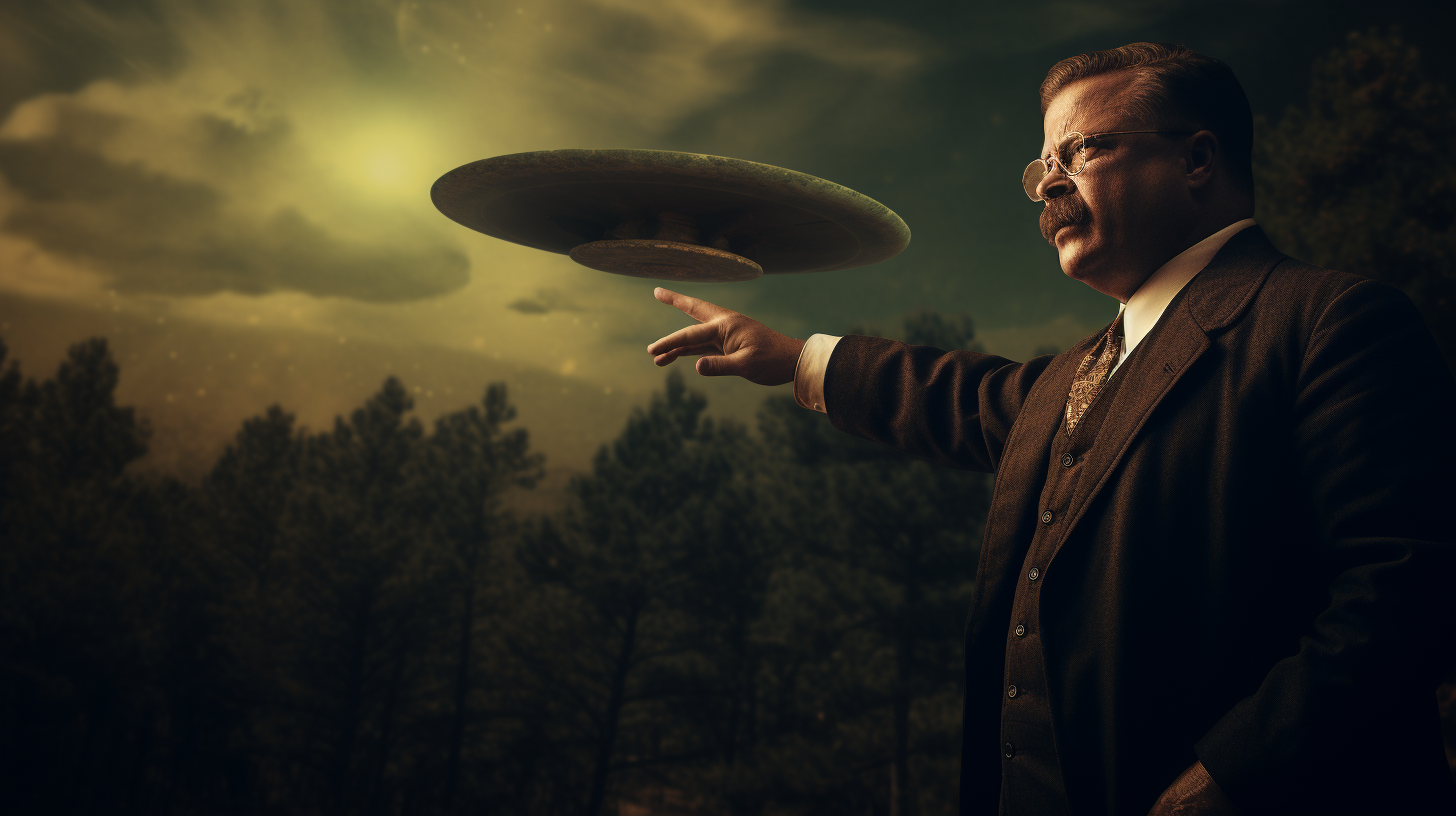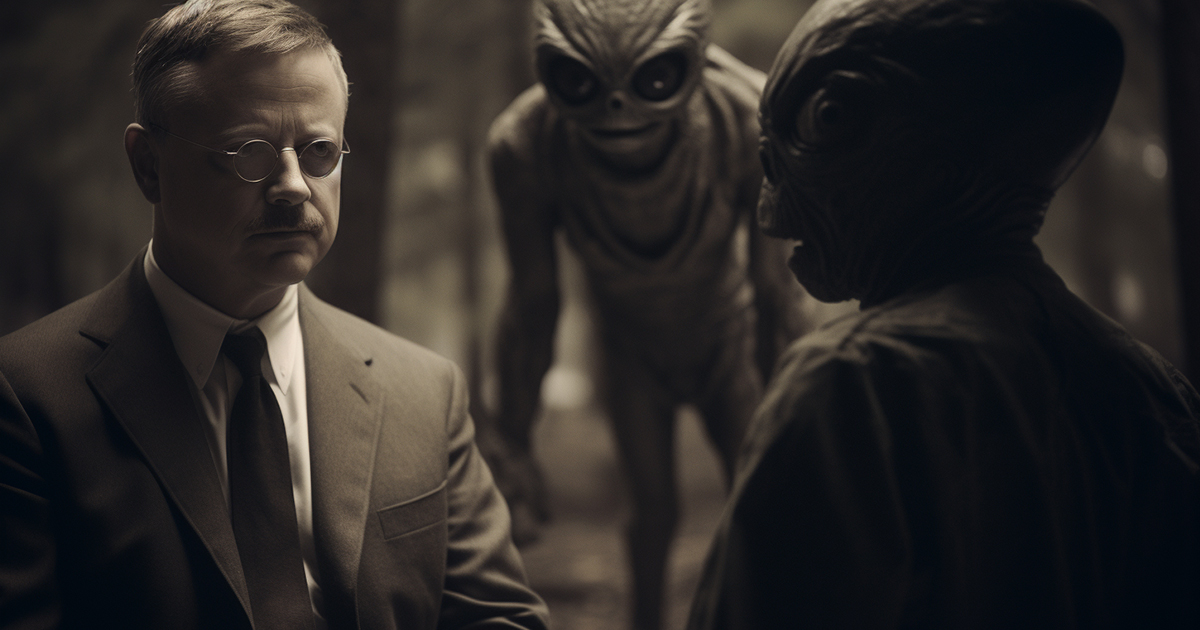A strange occurrence took place on August 1, 1907, at Theodore Roosevelt’s estate in the serene town of Oyster Bay, Long Island. It wasn’t your typical event – not a political assembly or a festivity, but an enigmatic visitation from an extraterrestrial entity that left onlookers baffled.
An enormous luminous sphere lingered in the sky for nearly two hours that evening, mesmerizing the residents of the surrounding area. Little did they realize that this event, unfolding concurrently with the president’s drafting of a significant speech, would eventually be enshrined in historical records.
During that time in 1907, Theodore Roosevelt was deeply immersed in formulating a speech that detailed his grand designs for the United States. His aim was to revamp the country’s Navy into a cutting-edge powerhouse that could propel America to global eminence.
This foresight later played a pivotal role in America’s journey through World War I, reshaping the course of history in a profound manner.
What adds a layer of intrigue to this UFO sighting is its synchronicity with Roosevelt’s visionary oration. Were the peculiar lights over Sagamore Hill merely a celestial display, or did they bear a deeper significance?
Despite the scarcity of UFO sightings in the early 20th century, this incident continues to intrigue researchers for various reasons.
The connection of this event to a U.S. president during such a critical juncture in history stirs curiosity. Furthermore, it underscores the rarity of UFO sightings during that era, which starkly contrasts with the surge in reports following World War II.
It was only after the war, under the administration of the 33rd U.S. President, Harry S. Truman, that UFO sightings garnered widespread attention.

The era of the Truman Administration marked a crucial phase in ufology, characterized by the emergence of “flying saucers.” Incidents such as Kenneth Arnold’s sighting, the Roswell episode, and the infamous Washington merry-go-round of July 1952 propelled UFOs into the public spotlight.
These encounters not only involved eyewitnesses spotting unusual objects but also radar detection at National Airport and Andrews Air Force Base.
The Washington sightings held such significance that even President Truman had to field inquiries about them. Interestingly, he neither outright denied nor completely dismissed the possibility of flying saucers.
In his own words, “We discussed it at every conference with the military.” This acknowledgment raises intriguing questions about the government’s stance and awareness regarding UFOs.
This surge in UFO activity coincided with the onset of the Cold War. In response to geopolitical tensions, the Truman Administration enacted a policy of governmental secrecy, establishing the National Security State.
The National Security Act of 1947 led to the formation of the National Security Council and the Central Intelligence Agency, ushering in a new epoch of confidentiality.
The decision to bolster governmental secrecy had far-reaching implications, particularly concerning dialogues on UFOs during a period of escalating sightings.
This juncture in history was pivotal, molding modern security protocols and influencing the trajectory of the 20th century at large.
Observe the Video:
Contemplating the 1907 UFO incident linked to Roosevelt offers a captivating prologue to an era where UFOs became objects of fascination, discussion, and official secrecy. It sheds light on the intricate interplay between cosmic enigmas and human history, prompting reflection on the concealed mysteries within the annals of time.
